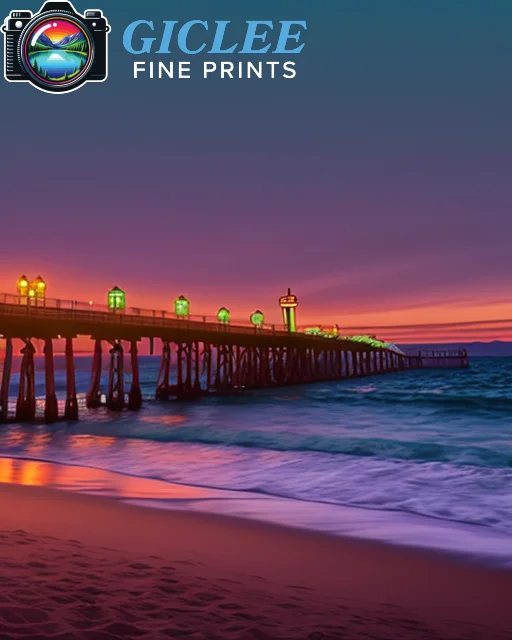
When it comes to displaying fine art and photo prints, the right matting package can make all the difference. Matting not only enhances the aesthetic appeal of your artwork but also offers protection, ensuring longevity and a professional presentation. Whether you’re working with canvas, fine art paper, or metal prints, choosing the perfect matting package involves balancing style, protection, and framing preferences. In this primer, we’ll guide you through the essentials of selecting matting packages for your fine artworks and photo prints.
What is Matting?
Matting refers to the material (usually paper or fabric) placed between the artwork and the frame. It serves both functional and aesthetic purposes, creating space between the print and the glass while enhancing the overall appearance of the framed piece.
Key Functions of Matting:
- Protection: Matting prevents the artwork from coming into direct contact with the glass, protecting it from moisture and condensation, which can lead to mold or damage.
- Aesthetic Appeal: By providing a border around the artwork, matting creates visual breathing space, allowing the image to stand out. This is particularly important for fine art prints, photo reproductions, and prints on canvas.
- Depth and Dimension: Matting adds depth to framed artwork, giving it a more polished, gallery-like look.
Types of Matting Materials
The choice of matting material is crucial to both the presentation and preservation of your fine artworks and photo prints. Here are the most common types of matting materials:
1. Paper Matting:
- Basic Matting: Made from wood pulp, this is the most common type of matting. While it’s affordable, it may not be the best choice for archival purposes, as it’s prone to yellowing over time.
- Best Use: Temporary displays or less valuable artwork.
2. Acid-Free Matting:
- Archival Quality: Acid-free matting is specially treated to prevent the deterioration of the print. It’s ideal for fine artworks and high-value photo prints that need to be preserved for a long time.
- Best Use: Archival-grade prints, such as giclee and art printing, that require long-lasting protection.
3. Cotton Rag Matting:
- Premium Matting: Made from 100% cotton fibers, cotton rag matting is the top choice for museum-quality framing. It’s both archival and acid-free, ensuring the utmost protection for valuable prints.
- Best Use: High-value fine art paper and giclee prints.

Choosing the Right Mat Color
The color of the matting can have a significant impact on the overall look and feel of your artwork. The right color can highlight key elements of the piece, while the wrong choice might distract from it.
Key Considerations for Choosing Mat Color:
- Neutral Colors: White, off-white, and cream are classic choices that suit most photo prints and fine artworks. These neutral shades allow the artwork to be the focal point.
- Complementary Colors: Choose a mat color that complements the tones in your artwork. For instance, a soft blue mat might enhance the sky in a landscape print.
- Bold Colors: For more contemporary pieces or vibrant canvas prints, a bold mat color can make a statement. Just ensure it enhances rather than overpowers the artwork.
Tip: For multi-layered matting, using two complementary colors can create a striking effect by adding depth and dimension.
Mat Thickness and Borders
Mat thickness and the width of the border play an important role in the overall appearance of your framed artwork. Thicker mats add depth, while thinner mats give a more subtle look.
Considerations for Mat Thickness:
- Standard Matting: Typically, mats are 1/16″ thick, offering a clean and polished look. This works well for standard photo prints and smaller artworks.
- Double or Triple Matting: For a more dramatic, layered effect, consider double or triple matting. This adds visual depth, making the artwork stand out. It’s ideal for large-format prints on canvas or fine artworks.
Border Width:
- Narrow Borders: A narrow border (around 1-2 inches) creates a sleek, minimalist look. This is great for modern metal prints or photographs.
- Wide Borders: Wider borders (3 inches or more) add grandeur to large artwork and help draw the eye toward the central image. It works particularly well for giclee and fine art paper prints.

Frame and Mat Pairing
Choosing the right frame to complement your matting is key to achieving a cohesive look. The frame should enhance the artwork without clashing with the mat color or style.
Key Frame-Mat Pairing Tips:
- Classic Black or White Frames: Pairing black or white frames with neutral mats is a timeless choice, perfect for fine art prints and giclee reproductions.
- Wood Frames: Natural wood frames add warmth and texture. They pair well with off-white or earth-toned mats for canvas and art prints.
- Metal Frames: For a sleek, contemporary look, metal frames in silver or black are a great match for metal prints or modern photo prints.
Custom Matting for Special Projects
For unique projects like large-scale prints, custom shapes, or peel and sticks for walls, custom matting options may be necessary. Custom matting allows you to tailor the mat size, thickness, and color to fit non-standard sizes or multi-piece artwork displays.
Custom Matting Options:
- Oversized Prints: Large pieces of artwork or prints on canvas may require custom matting and framing to ensure proper fit and presentation.
- Multi-Window Mats: Perfect for displaying multiple images in one frame, multi-window mats offer flexibility for photographers and artists who want to showcase a series of photos or a collection of smaller artworks.
Contact Us
Our address is: 3816 Pioneer Trail Ste #3, South Lake Tahoe, CA 96150
Email: Info@gicleefineprints.com
FAQs
Acid-free or cotton rag matting is ideal for preserving fine art prints because they prevent discoloration and deterioration over time.
While matting is more common for fine art paper and photo prints, it’s less typical for canvas prints, which are usually stretched and framed without a mat.
For a cohesive look, it’s a good idea to use the same mat color across all prints. However, if you want to highlight certain pieces, you can use different mat colors or styles.


